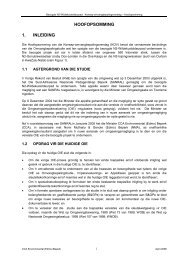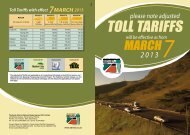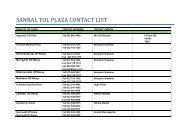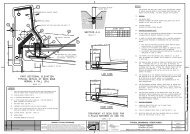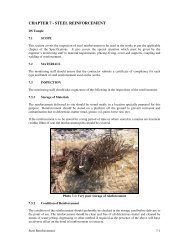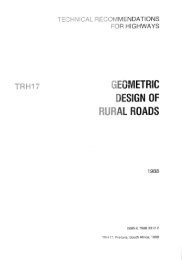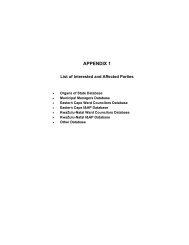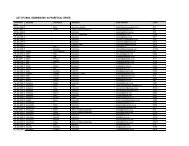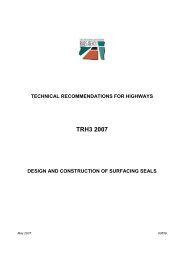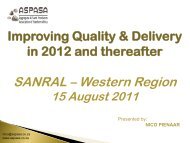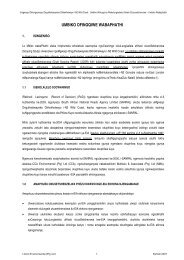SAPEM Chapter 2 - Sanral
SAPEM Chapter 2 - Sanral
SAPEM Chapter 2 - Sanral
You also want an ePaper? Increase the reach of your titles
YUMPU automatically turns print PDFs into web optimized ePapers that Google loves.
South African Pavement Engineering Manual<br />
<strong>Chapter</strong> 2: Pavement Composition and Behaviour<br />
Load<br />
Time<br />
Displacement<br />
Time<br />
Figure 30. Viscous Response to a Load, Sustain, Unload Cycle<br />
The behaviour of materials such as bitumen can only be described with an understanding of viscosity. Bitumen is<br />
very stiff (glassy) and elastic at low temperatures and becomes a fluid at higher temperatures. This is referred to as<br />
bitumen rheology.<br />
Viscosity is measured either dynamically by applying a shear stress to the viscous material, or, kinetically by<br />
measuring the flow of the viscous substance through known apertures. The units of the different measures of<br />
viscosity are:<br />
Dynamic: Pascal seconds (Pa.s) or Poise (P) where 1 Pa.s = 10 P<br />
Kinematic: mm 2 per second (mm 2 /s) or centistokes (CSt) where 1 mm 2 /s<br />
= 1 Cst<br />
The measurement of dynamic viscosity requires applying a shear stress and<br />
measuring the strain and time response. For viscous materials, the stress and<br />
strain response is dependent on the time of loading and temperature, which<br />
must therefore be measured.<br />
Viscosity Symbol<br />
Viscosity is represented by a<br />
dashpot.<br />
Section 10: Material Science<br />
Page 32





